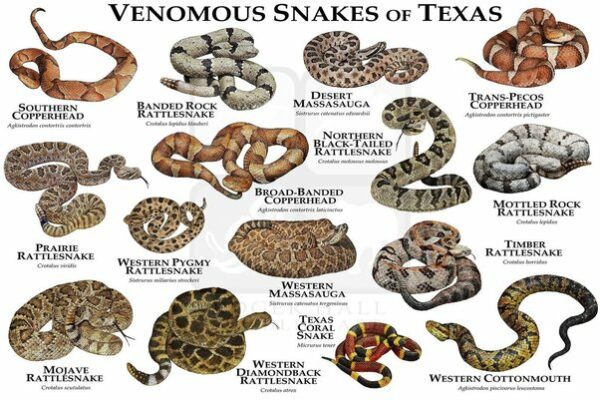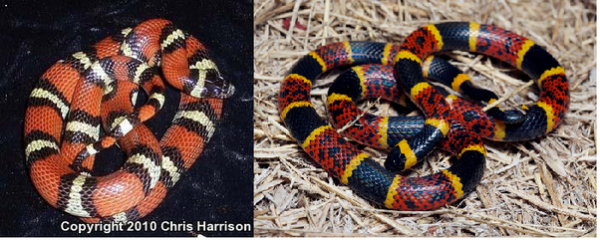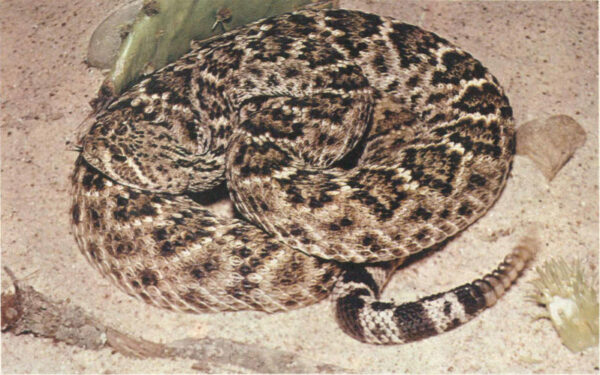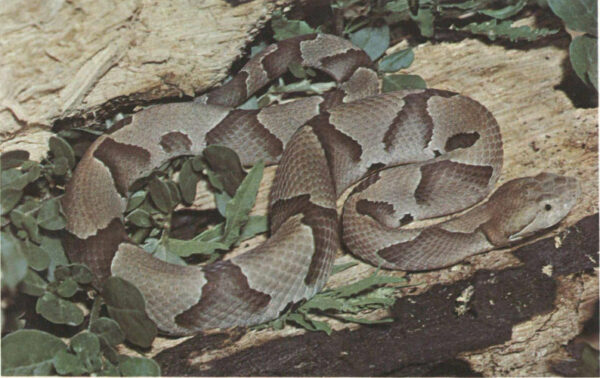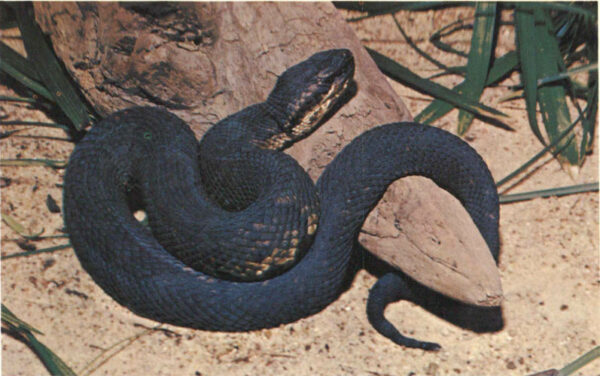Texas Serpents:
A Look at Our Venomous Residents
Written by Dean Aitken
For many adults of a certain generation, snakes evoke a sense of unease, perhaps influenced by iconic scenes like Indiana Jones bemoaning his reptilian adversaries. “Snakes, why did it have to be snakes”. The consensus was clear: snakes were creatures to be feared. One of the first questions I get from people moving to San Antonio is about poisonous snakes. Ok, and the heat in summer. While the heat is real, the risk of venomous snakes is pretty low. The most common snakes are the rat snake, garter snake and rough earth snake, none of which are poisonous.
The state hosts around fifteen venomous snake species but normally only four venomous species can be found in San Antonio. The western diamondback rattlesnake, broad-banded copperhead, Texas coral snake and cottonmouth, also known as water moccasin.
Coral Snake
The coral snake stands out because of its coloring, showcasing red, yellow, and black bands. Despite their venomous nature, coral snakes are relatively non-aggressive, relying on their vibrant colors to deter predators. Interestingly, their distinct appearance has led non-venomous snakes to imitate them. Milk snakes, which bear a resemblance to coral snakes, lack their venomous bite. A simple rhyme helps differentiate the two: “Red and yellow, kill a fellow – red and black, won’t hurt Jack.” So the one of the left is harmless. The one of the right, give them plenty of space.
Rattlesnakes
With their triangular heads and rattles, rattlesnakes present a formidable appearance. Contrary to their intimidating demeanor, rattlesnakes use their rattles as a warning system, preferring to avoid conflict. They don’t rattle when trying to attack something, they rattle when they want to avoid you. It’s essential to understand their role in controlling vermin like rats and mice, which pose more significant threats to humans by destroying 20% of the world’s food and carrying disease.
Copperheads
Copperheads, another pit viper, differ from rattlesnakes in their lack of a warning rattle. Their reddish-brown camouflage often blends with fallen leaves, requiring caution when traversing areas they inhabit. However, they tend to be small and their venom is less dangerous than other snakes. They are usually found near water.
Cottonmouths
Finally, cottonmouths not only live near water, they are true water snakes, hunting fish and frogs. Despite their reputation, their perceived aggression might be a misunderstanding, as they primarily hunt fish using scent. So if you are fishing and have caught fish or have live bait, they may swim right up to you.
I have focused on venomous snakes here, but most snakes are harmless to humans. For instance, if you find a black snake, away from water, more than likely it isn’t a cottonmouth. It’s probably a rat snake and harmless. If you run into a snake that hisses, vibrates its tail, and then plays dead, that’s a hognose snake. Deadly if you happen to be a frog, but no danger to humans. Understanding their behaviors and habitats allows for coexistence, fostering a balanced ecosystem.
Published on 2024-02-05 10:49:55

